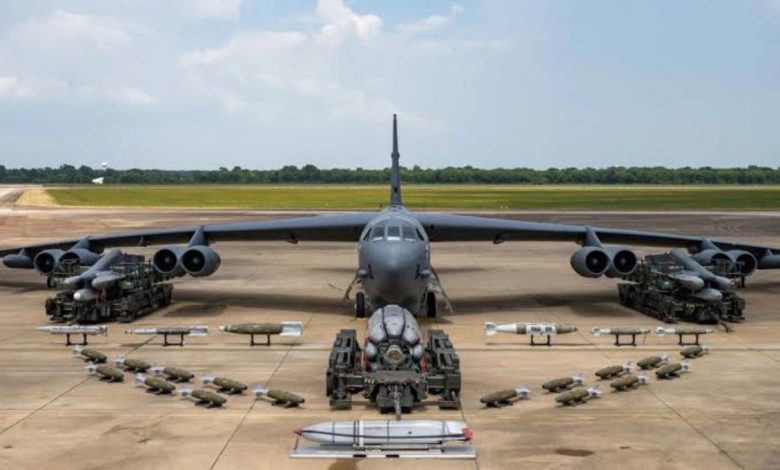US deploys B-52 bombers to Middle East: History and capabilities

The US military confirmed on Saturday that American B-52 bombers have arrived in the Middle East as part of a strategic deployment aimed at deterring Iranian aggression. The announcement follows Washington’s decision to send additional military assets to the region, including fighter and tanker aircraft and ballistic missile defense destroyers.
The B-52 Stratofortress bombers, part of the 5th Bomb Wing stationed at Minot Air Force Base, entered the US Central Command area of responsibility, which oversees operations in the Middle East and surrounding regions. The military emphasized that the US will take “every measure necessary to defend our people” should Iran or its proxies target American personnel or interests.
What is B-52 Stratofortress?
The Boeing B-52 Stratofortress, affectionately nicknamed the “Big Ugly Fat Fellow,” has been a stalwart of the US Air Force since its first flight in 1952. Entering service in 1955, the B-52 has undergone numerous modifications and upgrades, maintaining its status as a key asset in America’s strategic bombing capabilities for over six decades. With a design that is over 70 years old, it is one of the oldest and largest active-duty combat aircraft, yet it is expected to remain operational until at least 2050.
With a maximum takeoff weight of 488,000 pounds and a wingspan of 185 feet — two feet wider than the Leaning Tower of Pisa — the B-52 is known for its massive size and power. The aircraft can carry up to 70,000 pounds of mixed ordnance, including precision-guided bombs, air-launched cruise missiles, and a variety of other munitions.
Powered by eight Pratt & Whitney TF33-P-3/103 turbofan engines, the B-52 can reach speeds of up to 650 miles per hour (Mach 0.84) and can fly at altitudes up to 50,000 feet. Its range exceeds 8,800 miles (14,080 kilometers) unrefueled, making it capable of conducting long-range missions across the globe. The B-52’s ability to refuel in flight extends its operational capabilities significantly, allowing for extended missions that are only limited by crew endurance.
B-52 bombers arrive in Middle East
The arrival of the B-52 bombers comes in response to escalating tensions between Iran and Israel. On October 26, Israel conducted airstrikes against Iranian military infrastructure, further straining relations. In retaliation, Iran has previously launched attacks against Israel, including significant strikes in April and October 2024. Iran’s supreme leader has vowed retaliation for Israeli attacks, contributing to the increasing volatility in the region.
The United States has strategically deployed these bombers as a deterrent, reinforcing its commitment to supporting Israel and protecting American interests in the area. The Pentagon spokesperson, Major General Pat Ryder, reiterated that the US military is prepared to act if American personnel are threatened, highlighting the importance of the B-52 as a response tool in potential conflict scenarios.
Throughout its extensive operational history, the B-52 has been involved in many significant military campaigns, including the Vietnam War, the Gulf War, and more recent operations in Afghanistan and against ISIS. It has played crucial roles in various military strategies, providing both nuclear and conventional strike capabilities.
The B-52’s versatility allows it to perform various missions, including strategic attack, close air support, air interdiction, and maritime operations. Its high mission-capable rate and adaptability to modern warfare challenges ensure its continued relevance in the US military’s arsenal. Recent technological upgrades, such as the Combat Network Communications Technology (CONECT) program, have enhanced its communication and avionics capabilities, ensuring that it remains a critical component of the US Nuclear Triad alongside other strategic bombers.



